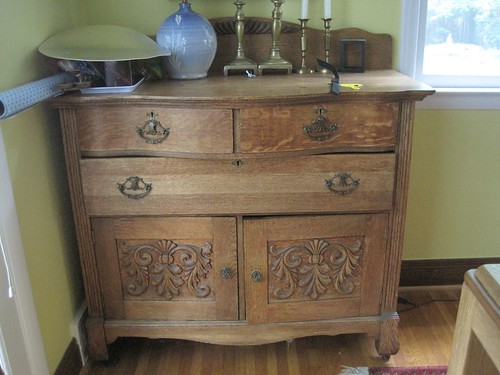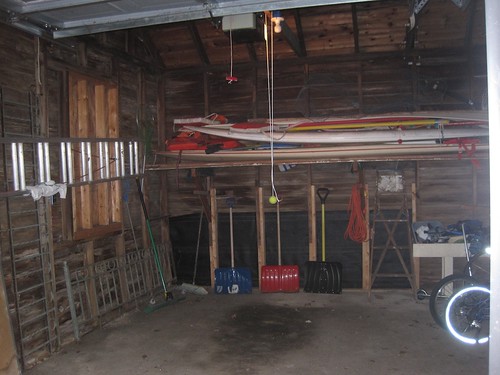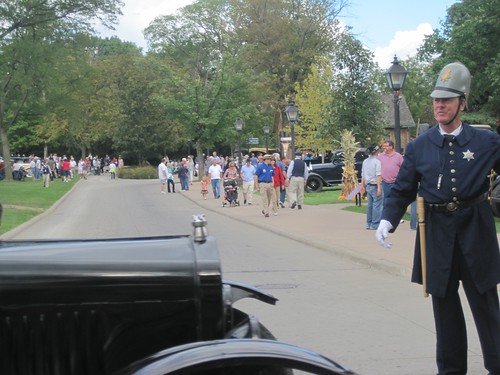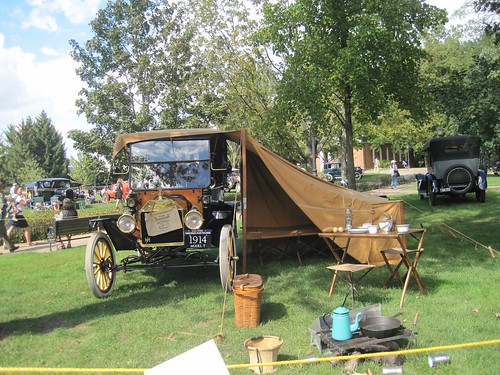I have often written about African masks and why I find them so interesting and appealing. At our recent visit to the St. Louis Art Museum, I made it a point to look at the African collection, and to try to read some of the notes available about the items there. Africa is a huge continent with a wide variety of cultures and peoples, a long history, and much that's been lost, but much more that's preserved in what I see as a rather mysterious state.
The three heads shown above and in detail at left, for example, are 18th or 19th century post-mortem portraits of upper-class individuals from Ashan, Ghana, in a tradition that European visitors observed from the 17th to 20th centuries, according to the accompanying documentation. The heads would be displayed outside the village, where they would be "periodically visited and honored." I wonder what that meant, and what the heads meant to the people in the villages. These little hints never quite present as much as I wish they would.
"Our knowledge of African antiquity is still developing," explains one general-information placard. "The existing material record reveals cultures that produced sophisticated and compelling explorations of the human condition. ... The Sahel, a horizontal band stretching from the Atlantic Ocean to the Red Sea just south of the Sahara, has a long history as a trading nexus of goods, peoples, and ideas. Over the course of the first millenium BC, the region developed rice cultivation, sub-Saharan Africa's earliest cities, and important iron-producing centers."
Each area of Africa, each set of people, each river valley -- all seem to have equally long and complex histories, yet most museums have only a small number of artifacts that represent an entire people's history, and rarely are there really old items -- the St. Louis museum has a few of them, but I didn't photograph them. Below are a few pictures of other masks and sculptures of heads in the museum.
The museum does not have the name of the artists for a single one of these heads and masks, though they do seem to know the names of the rites or the special ceremonial societies for which the masks were used. For example, the Suku mask below was made for initiation ceremonies, during which young boys from a village learned about farming and hunting. The mask personified village ancestors, according to the label.
 |
| Mende Mask, Sierra Leone, Early 20th C. |
 |
| Baule Mask, Je Society, Cote d'Ivoire, Early 20th C. |
 |
| Suku Mask, Congo, Late 19th C. |















































